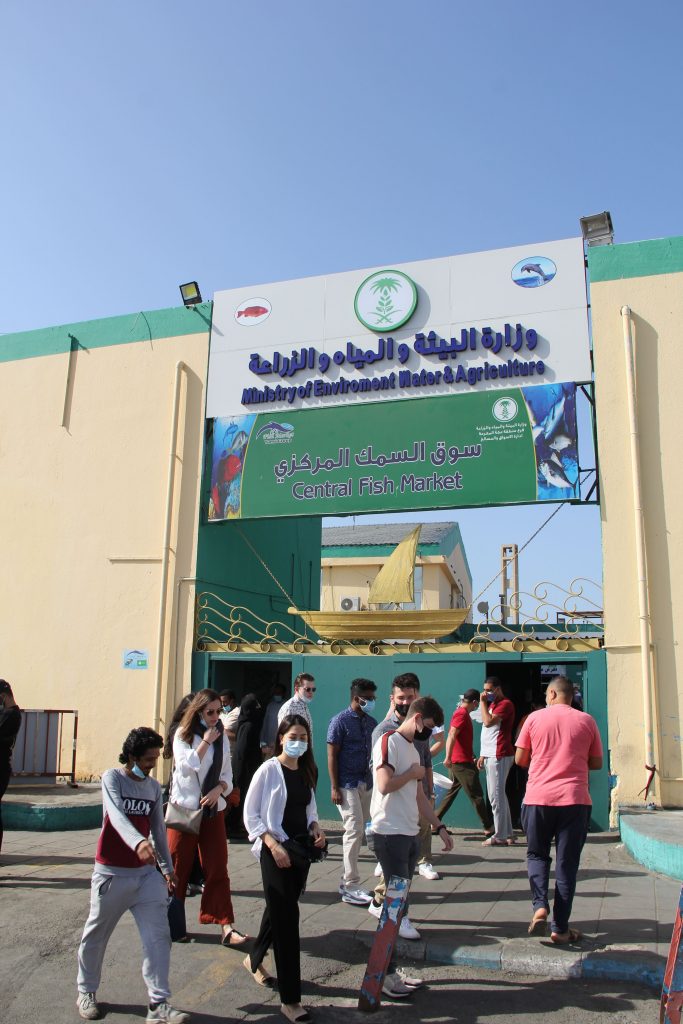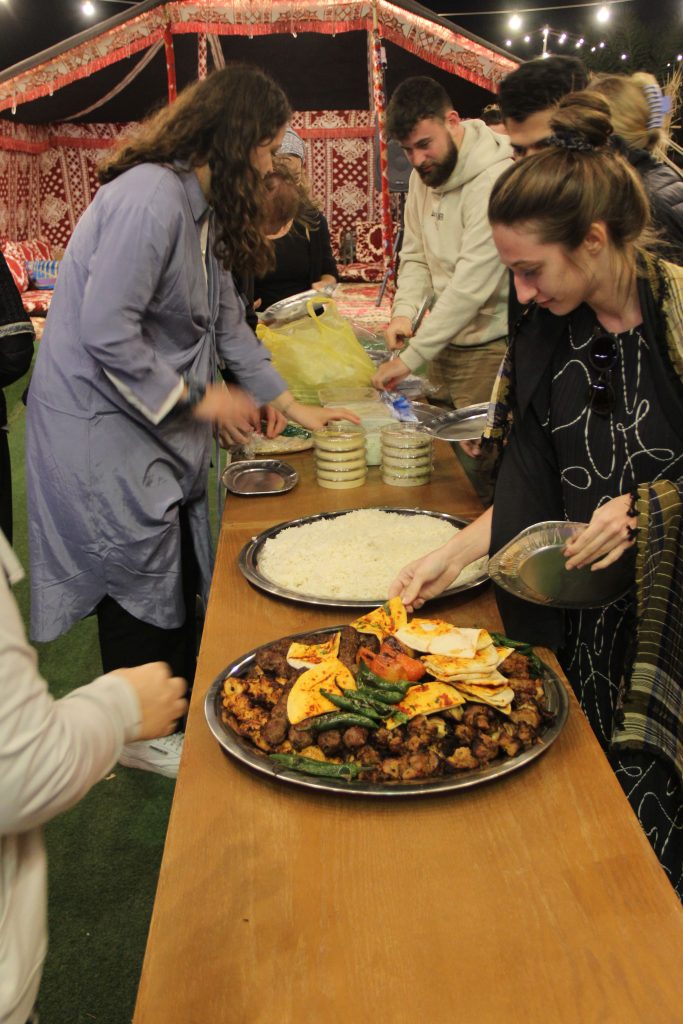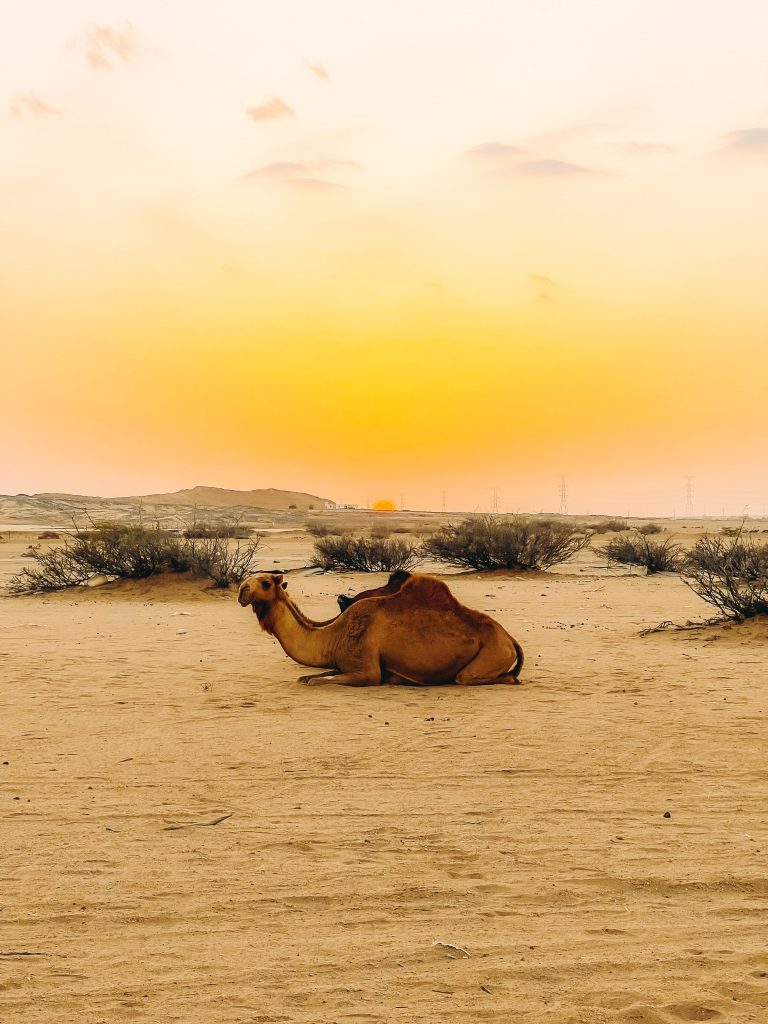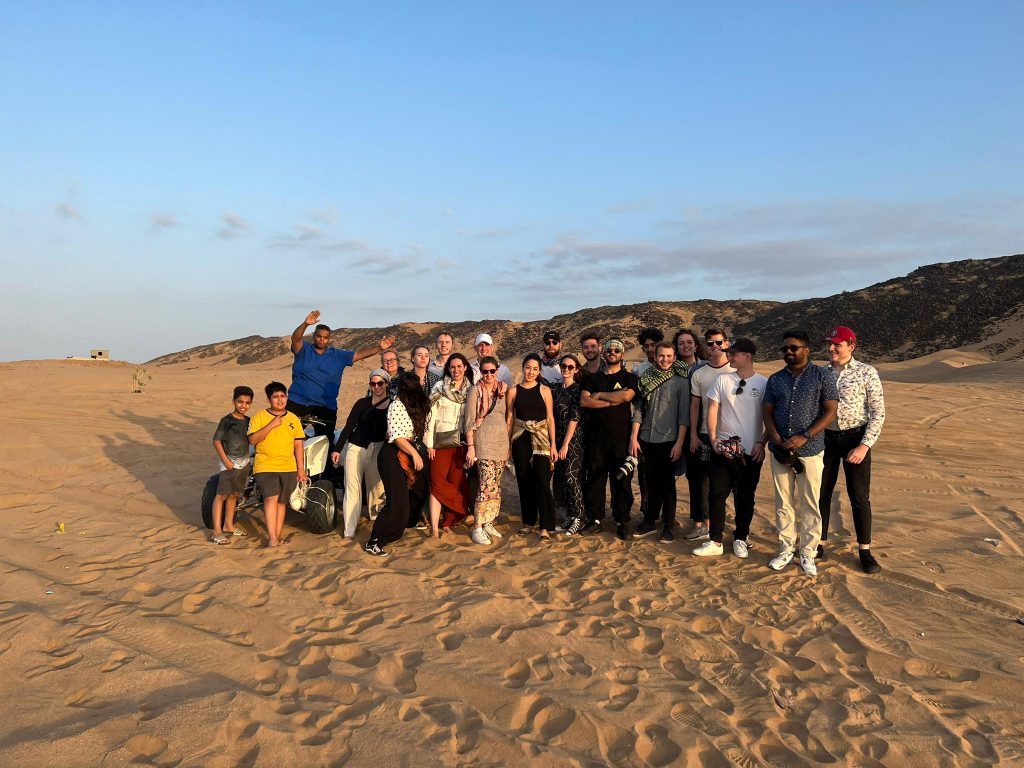The last day in Jeddah, a city between history and modernity, was more casual with a focus on culture.
The old fish market next to the sea welcomes visitors with its characteristic smell. This crowded place invites people to browse its fish stands where the local fishermen offer their catch of the day.
Local favourites, including the red grouper ‘najil’ and the Napoleon wrasse ‘tarabani’, are usually served with rice in the city on the Red Sea coast.

After the brief visit to the old fish market, we passed the, with its 171 metres, highest flag post in the world. We were brought to the site of a floating mosque. However, like many sites in Saudi, the mosque was currently under construction. The city seems to be preparing itself, with all its power, for the future rush of tourists.
The afternoon was then spent at a little farm in the desert. This Bedouin-like settlement, just off the main motorway, featured seating areas inside and outside of tents, horses and other animals as well as a football pitch.
After another Al-Baik (fast-food) lunch at the farm, the bus drove us into the desert towards a small mountain range. The terrain changed from sparing vegetation on dried mud to a sandier ground interrupted by rigid black rock. The hike up onto the mountain was rewarded by a breath-taking view and rides with locals in their off-road vehicles on a nearby dune. The unobstructed view with its beautiful light at this time of day created a marvellous scene to take pictures.
After enjoying the sunset in the company of dromedaries with their offspring, we were brought back to the farm, where a delicious local dinner, consisting of grilled meat and vegetables, rice, hummus, and flat bread was waiting.

This enchanting evening in the tents marks the end of an insightful but equally intense week.
In the end, we leave this ambitious but still mysterious country with more questions than when we arrived in Saudi Arabia.

